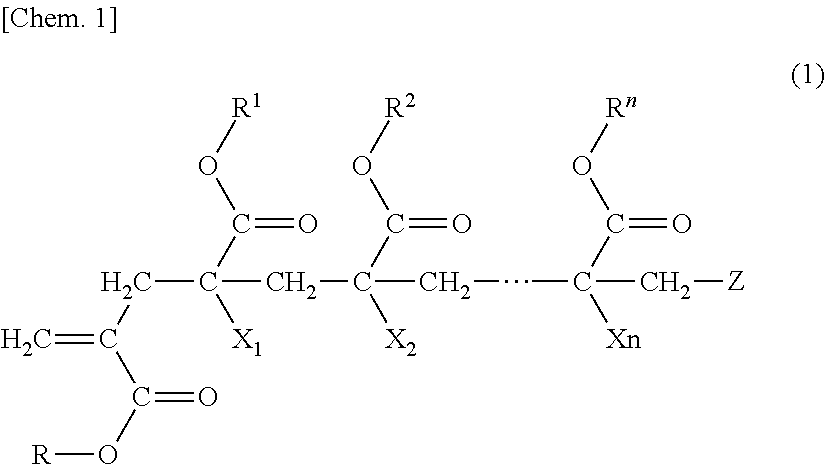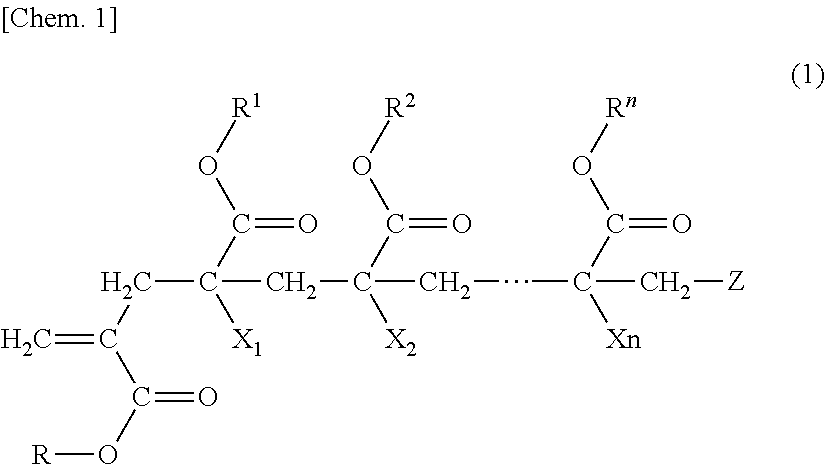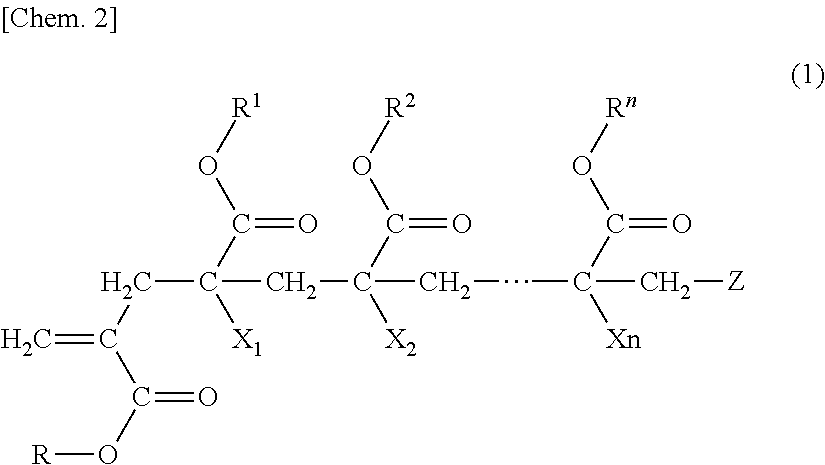Polymer, production method for same, and molded article
a technology of polymer and production method, applied in the field of polymer, can solve the problems that the monomer used in the monomer cannot achieve sufficient pliability in the acrylic resin molded article, and cannot meet the diverse conditions that are required for a material, etc., to achieve the effect of high pliability, low haze value, and exceptional pliability
- Summary
- Abstract
- Description
- Claims
- Application Information
AI Technical Summary
Benefits of technology
Problems solved by technology
Method used
Image
Examples
example 1
[0254]An aqueous suspension was prepared by mixing 145 parts of deionized water, 0.1 part of sodium sulfate, and 0.26 part of the dispersion agent (1) produced in Production Example 1.
[0255]To a separable flask with a condensing tube, 40 parts of the macromonomer (a-1), 36 parts of n-butyl acrylate (nBA) (manufactured by Mitsubishi Chemical Corporation, trade name) and 24 parts of ACRYESTER M as the vinyl monomers, 0.2 part of n-octyl mercaptan (n-OM) (manufactured by KANTO CHEMICAL CO., INC., trade name) as the non-metallic chain transfer agent were added and the temperature was raised to 50° C. under stirring to obtain a composition. After the obtained composition was cooled to 40° C. or lower, 0.3 part of AMBN (trade name, 2,2′-azobis(2-methylbutyronitrile), manufactured by Otsuka Chemical Co., Ltd.) was dissolved in the composition, thereby obtaining a starting material composition (1).
[0256]Subsequently, after the above-described aqueous suspension was added to the starting mat...
examples 2 to 11
[0261]A polymer and a molded article were produced in the same operation as in Example 1, except that the composition of the polymer and the added amount of the non-metallic chain transfer agent were changed as presented in Table 2. The evaluation results of the obtained polymer and the obtained molded article are presented in Table 2.
[0262]However, the molded articles of Examples 9 to 11 were not evaluated.
PUM
| Property | Measurement | Unit |
|---|---|---|
| Tg | aaaaa | aaaaa |
| temperature | aaaaa | aaaaa |
| haze | aaaaa | aaaaa |
Abstract
Description
Claims
Application Information
 Login to View More
Login to View More - R&D
- Intellectual Property
- Life Sciences
- Materials
- Tech Scout
- Unparalleled Data Quality
- Higher Quality Content
- 60% Fewer Hallucinations
Browse by: Latest US Patents, China's latest patents, Technical Efficacy Thesaurus, Application Domain, Technology Topic, Popular Technical Reports.
© 2025 PatSnap. All rights reserved.Legal|Privacy policy|Modern Slavery Act Transparency Statement|Sitemap|About US| Contact US: help@patsnap.com



